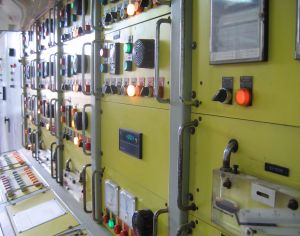Remote telemetry and the effect on jobs
There are many people concerned about new technology ‘stealing’ jobs, but in reality it is just changing the types of jobs that people have. A particular example is remote telemetry and the effect on jobs.
For centuries, society has been challenged by technological changes that have an impact on jobs, the transition from working in fields to factory working, the change to the workforce when women made a bigger impact by doing work traditionally done by men. And now, with automation and technology, there is outcry on jobs being lost to automation and self-service checkouts.
Remote Telemetry and jobs
There are many new systems that allow workers to remotely control large infrastructure assets, such as mining equipment or logging machinery, which may be considered to be a ‘loss’ of jobs – but the bigger picture needs to be seen. In a remote area such as a mine, a large piece of machinery may need several shifts of people to operate it, and those people also need to be housed and fed. Those people would be away from their friends and family, possibly staying in low quality accommodation and with poor food, with not much to do other than work. So, that is as many as 10 people to operate one mining truck (if you factor in the support of three shifts of people).
With remote control of the vehicle, it no longer needs to be designed with a cab, and shift changes no longer need a worker to travel down into the mine, and the workers no longer need to be housed, fed and entertained. Shift changes are now in an office building, where the remote telemetry drivers are not in high visibility clothing, no longer breathing in dangerous particulates – the most dangerous part of their job is the commute through city traffic. The vehicle or equipment they control is more effectively used, with no delay in shift changes, the drivers are able to return to their families in the evenings – and enjoy their city life.

Whilst this may sound bad for some jobs, particularly low skilled jobs, it is more of a shift to other types of work. There are still jobs in the communications and IT industries, the equipment still needs to be repaired or maintained. However, less jobs requiring people to be in dangerous places, and fewer people working in remote areas. New jobs get created to replace the ones that are taken away by remote working.
Safety through remoteness
More than the safety of the operators in not operating in hazardous areas, there are other safety benefits in being remote. By the operators no longer having a fear of their own safety or health, they can make better decisions. Take for example a military drone operator;
A drone over a war zone can have a remote operator who is in a safe environment. They would have had a comfortable night sleep, good food and not be under stress. Any decisions they need to make can be performed by simply turning to a senior officer or more experienced peer – who can have access to the same information and assist in decision making. The operator has not had to sleep in a tent in a war zone, is not stressed by being in danger, and decisions are able to be discussed and confirmed.
The lessons from COVID-19
[Updated December 2020] One thing that has been positive about the Coronavirus’ impact on us has been the greater uptake and acceptance of remote working, even for those who are VERY remote. A key example is how NASA was able to transition their Mars Perseverance rover team to work from home, where the NASA specialists were able to avoid the risks of going into their regular workplace and continue their work from home. The risks and dangers in the era of CoVid-19 has made a normal workplace to be a potentially dangerous work environment, and allowing people to work from home has been the safe environment.
